According to Deloitte, 77% of workers have experienced burnout at their current job, with 51% of them going through it more than once.
Let’s just say it right off the bat: people are overworked. Across all industries, ages, genders, and locations. Across the board. We’re not going to get into why that is at this time, but rather what you can do about it.
You can begin by making sure that each employee in your agency or business only takes on as much work as they can handle, and the most efficient way to do that is to utilize the power of workload management software.
With that in mind, we have decided to make it easier for you by narrowing down the list to 11 ultimate workload management tools and software in 2025. Keep on reading to find the perfect match for your agency team.| Software | Best for | Pricing | G2 Rating | Capterra Rating |
|---|---|---|---|---|
| ActiveCollab | Service businesses, 15-50 employees | $ | 4.2 | 4.5 |
| Wrike | Project Management oriented businesses | $$ | 4.2 | 4.3 |
| Trello | Personal projects and small teams | $ | 4.4 | 4.5 |
| Monday.com | Marketing teams and PMOs, 50+ employees | $$ | 4.7 | 4.6 |
| Jira | Team using Agile and Scrum methodologies | $$ | 4.3 | 4.4 |
| Asana | Remote and cross-functional enterprise teams | $$$ | 4.4 | 4.5 |
| ClickUp | Large agency teams, 50+ employees | $$ | 4.7 | 4.6 |
| Bonsai | Small service business | $$ | 4.3 | 4.6 |
| Smartsheet | Users who prefer spreadsheet-style work management | $$$ | 4.4 | 4.5 |
| Basecamp | Individuals or small teams up to 15 employees | $$$ | 4.1 | 4.3 |
| Productive.io | Service businesses 50-100 employees | $$$ | 4.7 | 4.6 |
1. ActiveCollab
Putting ourselves first, already?! Well, wait, it's for a good reason!
Our workload management feature is something we've seen various industry lacking so we took a bit different approach to managing workload – we are not isolating workload management as internal management campaign, but we're combining it with capacity planning, resource allocation management and project management, all while monitoring business health metrics.
With this approach, you'll not only find the most optimized way for your team to perform, but you'll be able to track every single penny and see are your efforts really profitable, or you're burning money by investing time in wrong places.
In general, ActiveCollab is a productivity workspace and workload management platform that enables you to manage your projects while ensuring a fair distribution of work among your team members.
Unlike others, we specialize in helping specific teams achieve maximum efficiency and scale their business through workload optimization and team collaboration – ActiveCollab is specifically aimed at service businesses with 15-50 employees – creative agencies in industries such as marketing, content creation, or web design.
Key Features
Here are some of the key features of ActiveCollab that can take your workload management to the next level:
Workload Management for Agencies
With ActiveColab, you can easily set up daily capacities for each employee, as well as time estimates for each of the tasks. You can break down each project into individual tasks, set due dates, and get a comprehensive view of where your team is at in terms of progress.
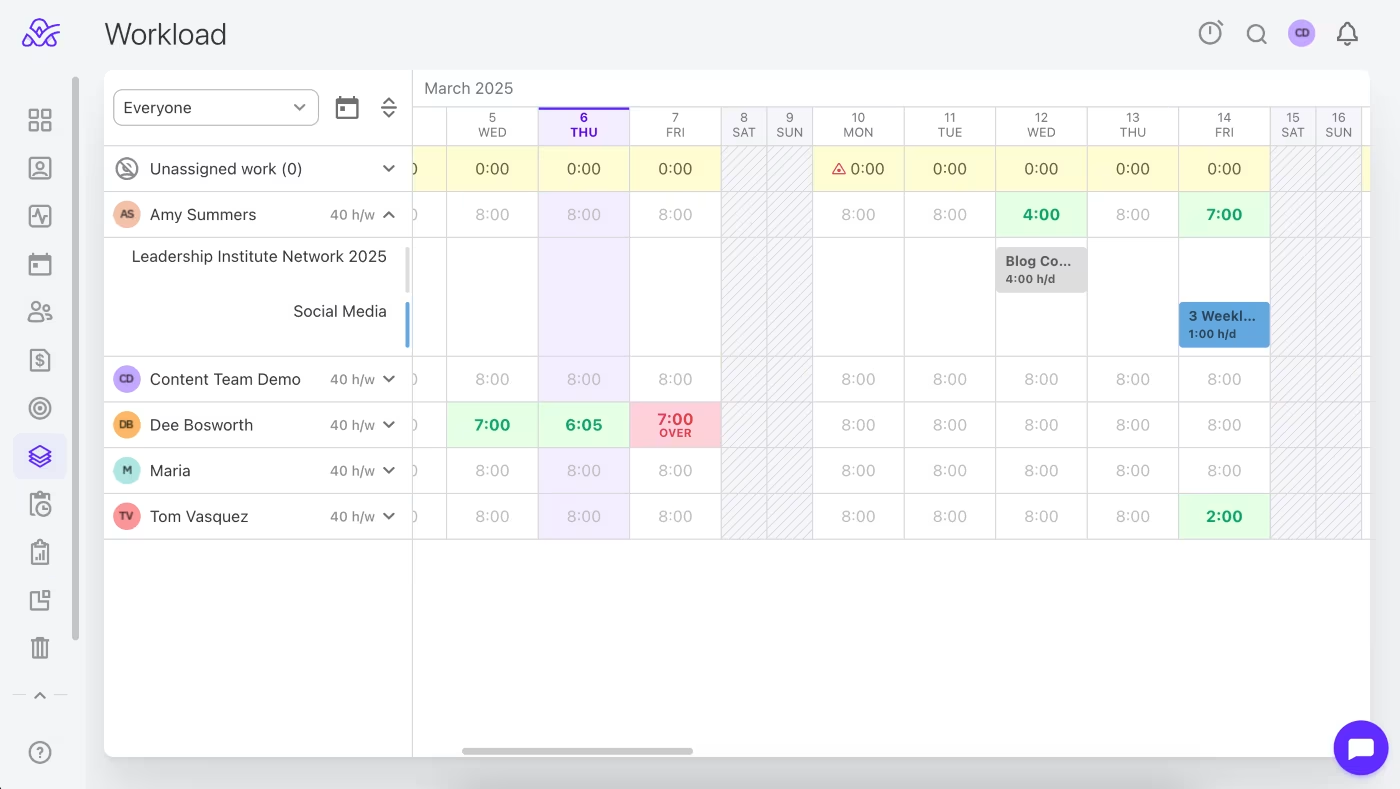
In case there is a change in your original plan, the dedicated Workload management feature enables you to simply drag and drop tasks to a sooner or later date, or from one team member to another, and stretch the start and finish date of the project, while automatically recalculating everything while taking into account things like days off and weekends.
Check out how Workload management feature actually works:
Time-Tracking
ActiveCollab’s Stopwatch feature allows your team members to track how much they have spent on tasks by simply running and pausing the stopwatch at any given moment. All of the recorded time gets to the Team Timesheet so that you can get a clear view of your team’s productivity.
The Stopwatch feature also functions on a project level, which means you can run, pause, and unpause it much like you would a single task.
Custom Task Reporting
If you have clients who prefer to know how their money is being spent, ActiveCollab helps your agency put their minds at ease with advanced reporting. You can easily compare the estimated vs. tracked time and identify which tasks or projects have taken more time than initially planned and automatically generate detailed reports for your clients, as well as for yourself.
You can also create custom reports by using the filtering options by client, project, team member, job type, month, year, as well as a number of other criteria. Finally, you can get a better view of how much each of your projects costs, as well as how it is affecting your agency’s bottom line.
Pricing
For more details, visit ActiveCollab’s pricing page or sign up for a 14-day free trial, or book a demo to gauge the platform's true capabilities.
2. Wrike

If you are looking for a project management solution that is capable of handling complex projects, Wrike is a good option to consider. With advanced features for resource allocation and customizable workflows, Wrike is ideal for enterprises and large companies that need to handle large or multi-phase projects.
It also enables teams to overview projects using visual timelines, such as Gantt charts, and use built-in collaboration tools such as direct chat, comments, and file sharing for better communication.
Key Features
- Custom workflows that can be made to fit specific industry needs
- Detailed reporting for project progress, team productivity, and overall performance
- Resource management for even workload distribution
- Ability to integrate over 400 tools and apps, such as Slack and Salesforce
- Collaborative platform with file sharing, commenting, and direct team communication
Pros: If your agency or business is always tackling massive projects that have several phases and feature multiple dependencies, Wrike is powerful enough to help you handle them, all the while making sure that the task distribution is even.
You can easily scale your efforts, so it’s suitable for both growing companies and big enterprises.
Cons: If you are looking for a simple and streamlined solution to manage your agency’s workload, you may be intimidated by Wrike’s UI, which can be pretty intimidating and complex.
Pricing
Wrike’s free plan allows you to make use of its basic task management functionalities. Its monthly Team plan costs $10 per user, while the Business plan is priced at $24.80, which might put it out of reach for small agency teams on a budget.
3. Trello
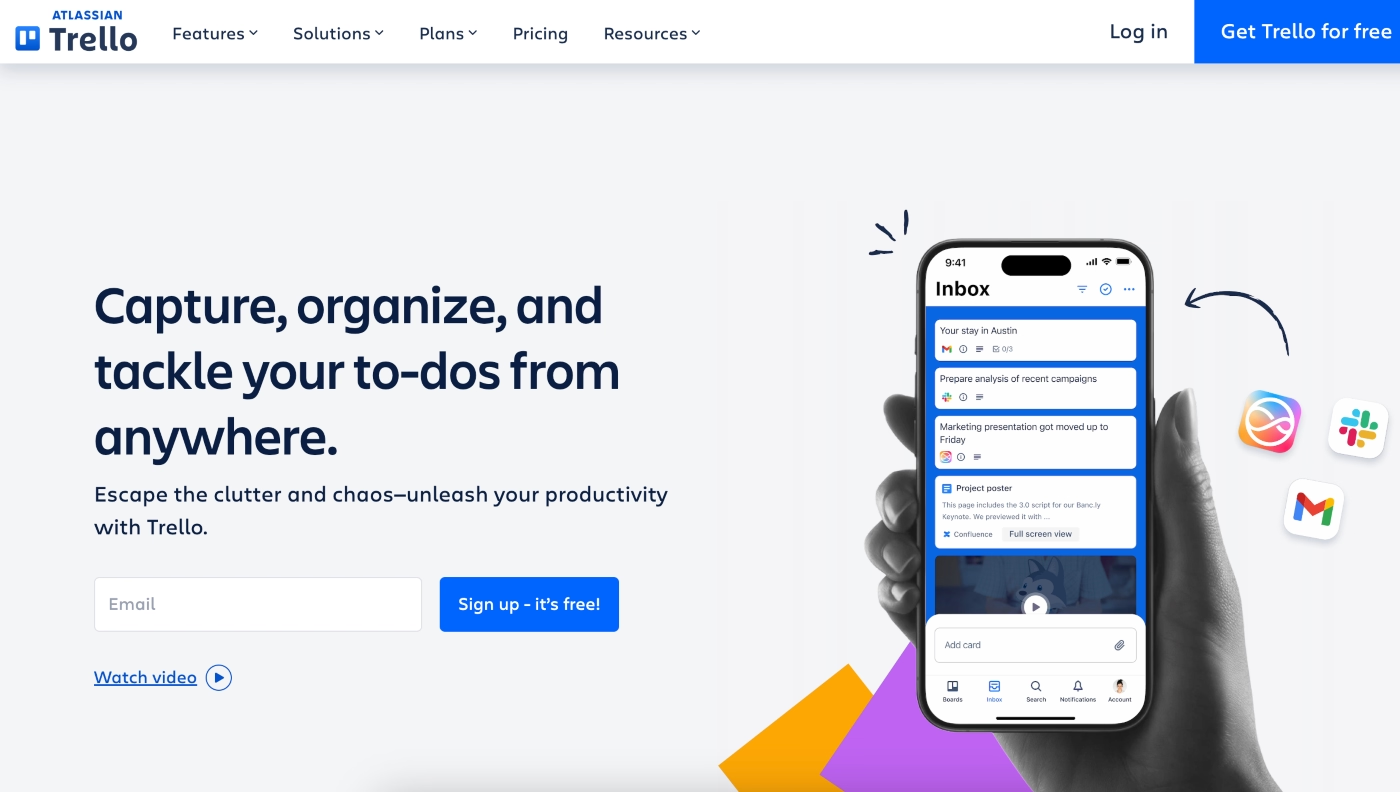
Trello is all about making things as simple as possible when it comes to project and workload management because it presents everything in visual form. If you prefer to work using Kanban boards, you will find much to like about Trello, thanks to its drag-and-drop Kanban boards.
And the visuals-first approach doesn’t end there, because Trello also provides you with customizable cards which can be enhanced with information such as labels, due dates, and attachments. You can also make use of color coding to easily see which tasks have which priority.
Key Features
- Visually-oriented workload management with drag-and-drop boards
- Boards can be enriched with time tracking, calendars, and popular tools and apps
- Collaborative board sharing, task assignments, and commenting for easier communication
- Creation of rules, recurring tasks, and commands with a no-code automation tool called Butler
- Integrations with ClickUp and Jira
Pros: Trello is extremely easy to use, thanks to its visuals-first approach, which makes it a great choice for those who are not yet familiar with project management tools. In that aspect, it seems like it's tailor-made for small teams and those looking for a reliable platform to manage personal projects.
It comes with a free plan, and its Standard monthly plan costs only $5 per user, which makes it very affordable for small teams. You can also automate a great deal of work using Butler.
Cons: Trello’s simplicity is great for small agency teams, but it may not be the best option out there if you are looking for a workload management platform capable of handling complex, high-volume projects.
Also, if your team is on the larger side or if it’s growing, Trello’s price per user may prove to be a bit on the steep side.
Pricing
Prices start at $0 for the free plan, and go up to $17.50 for the Enterprise package.
4. Monday.com
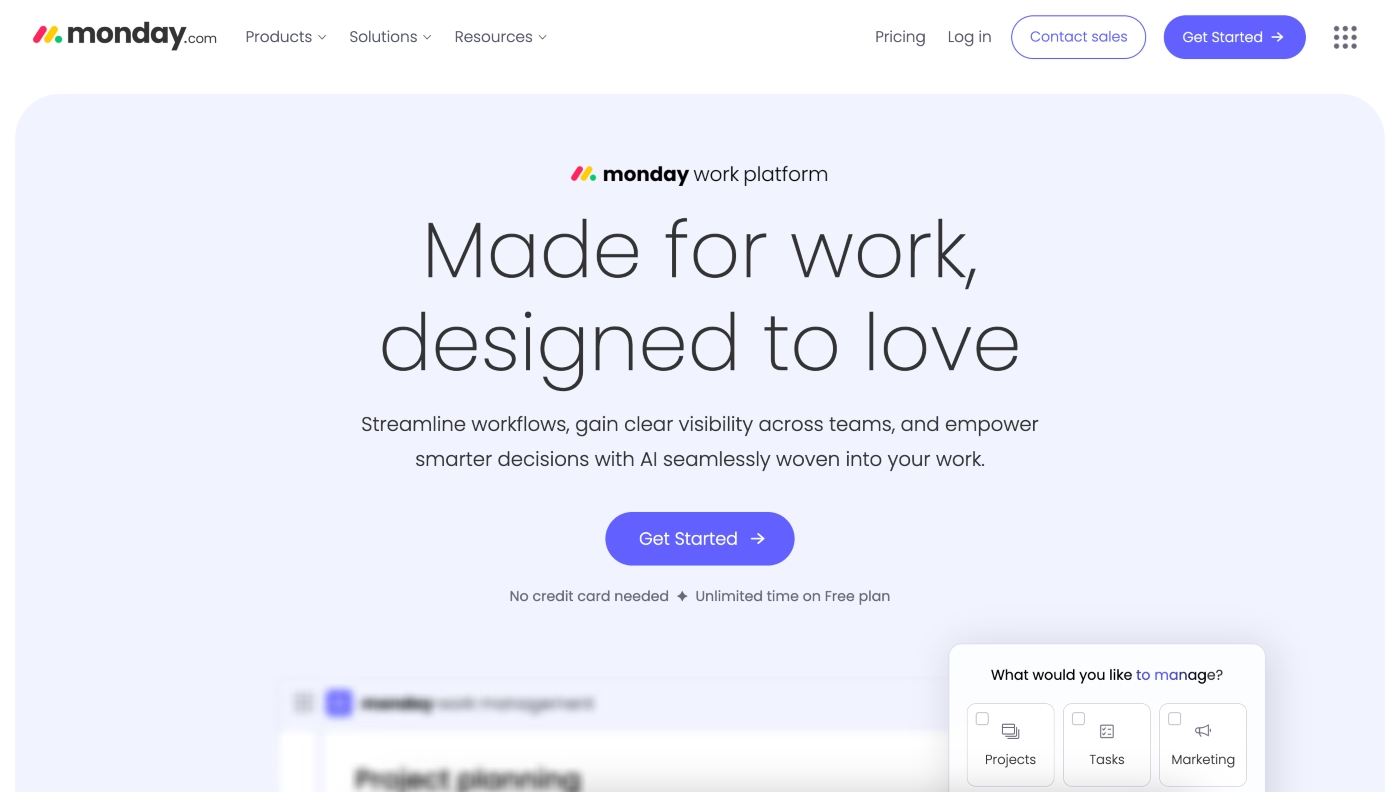
Monday.com is best suited for marketing teams, as well as PMOs, because it is packed with marketing-specific features that allow you to manage brand assets, as well as track your marketing campaigns.
On top of that, it has you can create no-code workflows specific to content creation and social media management, just to name a few. Similar to Trello, Monday.com is all about having a highly visual and intuitive UI.
Key Features
- Fully customizable project dashboards
- Automation of manual tasks, such as notifications and status updates
- Color-coding for task priorities and statuses
- No-code workflow creation
- Integration with 200 apps, such as Slack, Google Drive, Dropbox, as well as Jira
Pros: Automation features and a large number of integrations can help small agency teams save time and money. Visual dashboards, including color-coding for statuses, make for a very natural and intuitive user experience.
Monday.com also allows you to manage your team’s workload on the go, since it offers mobile apps for both iOS and Android. Also comes equipped with easy-to-use project templates.
Cons: Monday.com is crammed full of features, so setting it up and learning how to use it may take a while and beginners might find themselves overwhelmed. Also, some users have complained about notification delays.
When it comes to price, it’s not the most budget-friendly option for smaller teams or budding startups.
Pricing
Not including the free plan, prices start at $9 per user/month all the way up to $19 per user/month for the Pro package. You have to reach out to them for the price of their Enterprise package.
5. Jira
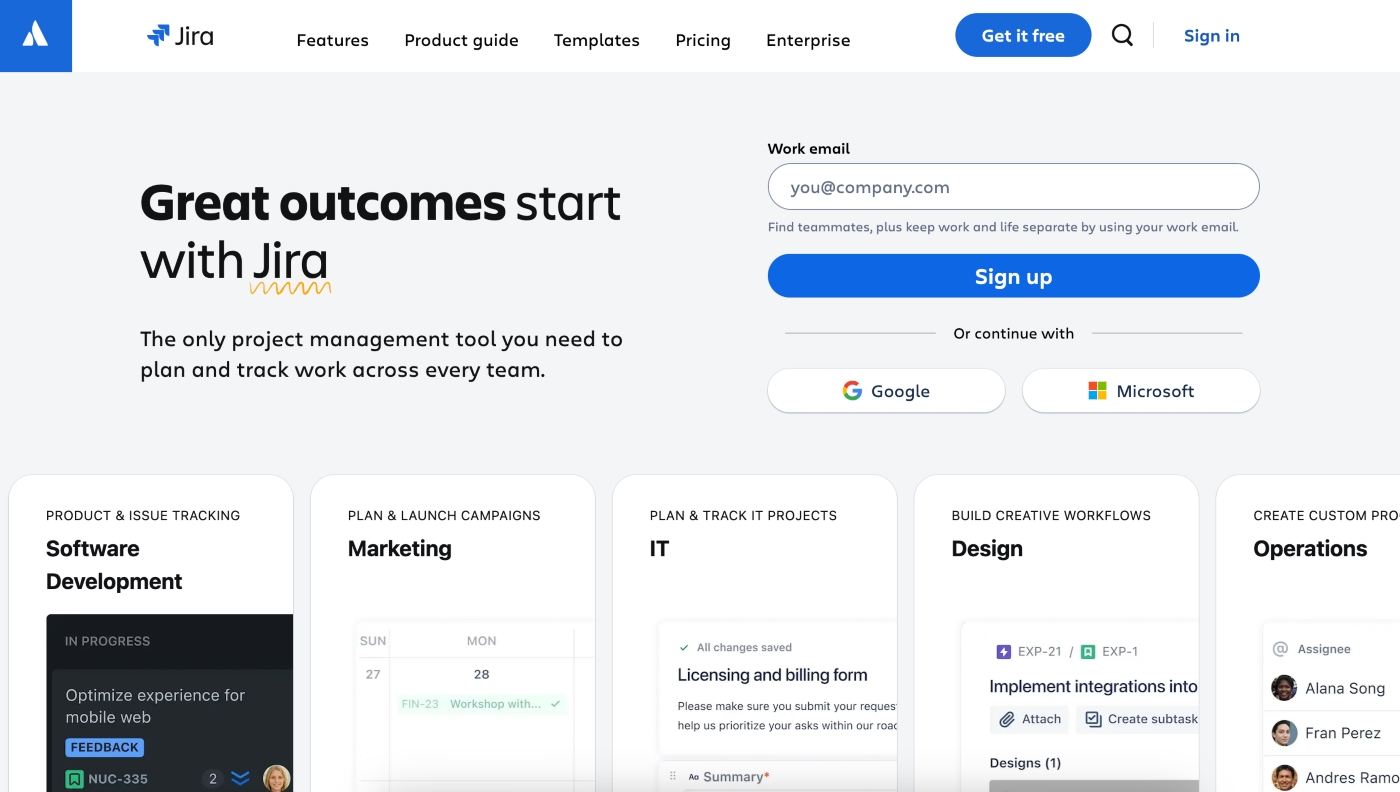
Although it was originally rolled out as an issue-tracking tool, Jira has evolved into one of the most popular and powerful project management platforms that allows agencies to plan and manage their workloads.
Even though it doesn’t have any resource management features by itself, it is still owned by Atlassian, which means its functionality can be expanded by add-ons and integrations. Jira is the preferred option for most software development teams, but it can also work really well for Agile marketing teams.
Key Features
- Support for workload automation
- Comes with templates for the marketing industry
- Integrates with Atlassian Work Management and other popular tools
- Android and iOS apps available
- Advanced reporting and analytics
Pros: Jira is the perfect solution for marketing teams that use Agile methodology. Also, you can scale your operations really effectively with it, regardless of the size of your company. Last but not least, its powerful analytics and reporting features make it easy to track the overall performance of your team, as well as the progress of your projects.
Cons: Jira’s interface requires a bit of getting used to, as it feels really complex, plus the overall design of the UI and dashboard is not among the best ones we have seen. Also, for teams not using Agile, the whole system can feel a bit intimidating.
Pricing
Jira is free to use for up to 10 users. Prices start at $7.53/month per user for the Standard plan. It’s $13.53/month per user for Premium, and as for the Enterprise plan, you will have to contact their sales department.
6. Asana
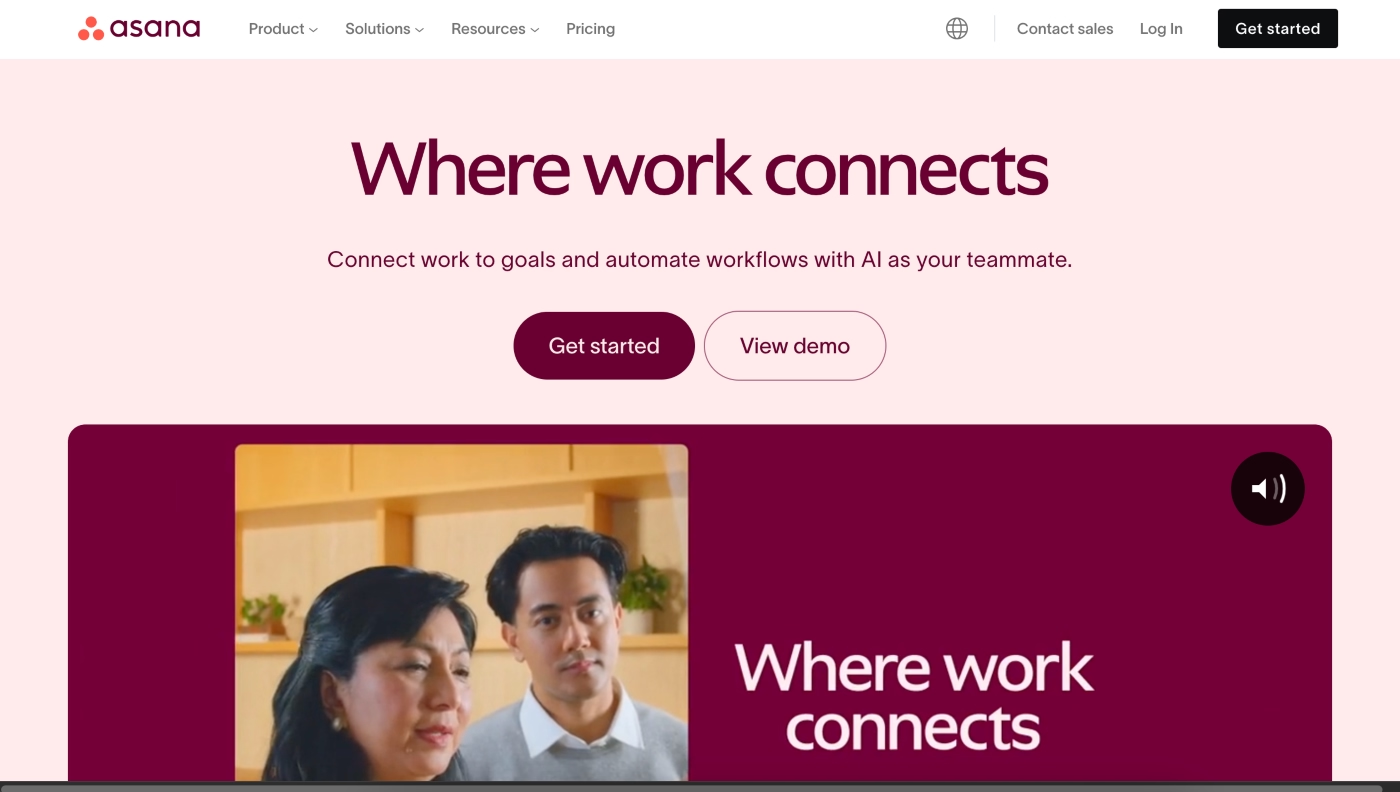
Asana is among the more popular project and workflow management tools out there, and it’s suitable for teams of just about any size, even for freelancers. It also comes with workload management features, allowing you to balance your team’s tasks and capacity.
One of the highlights of this platform is the Workflow Builder feature, which enables you to create customized workflows without any knowledge of coding. This feature lets you automate repetitive and mundane tasks, so your team can focus on real work.
Key Features
- Workflow automation with no-code Workflow Builder tool
- Templates for task management
- Collaboration tool to support remote teams
- Effort estimates in hours or points to gauge workload more effectively
- Custom dashboard and reports that include workload metrics
Asana integrates with a wide variety of tools (Slack, Google Calendar, Microsoft Office 365, Microsoft Teams, other PM tools, etc.) to provide a streamlined workflow and comprehensive workload management across different platforms.
Pros: Asana stands due to its ease of use, since it can be set up and used almost momentarily, even by novice users. It’s very versatile, which means it works equally well for creative agencies, as well as for software development teams.
Cons: Asana’s free version doesn’t come with many advanced features, which means there is no reporting available. While it’s very user-friendly, it doesn’t allow for the level of customization that might be required for larger teams.
Pricing
Asana’s Personal plan is free for up to 10 team members. Starter plan costs $10.99/month per user, and the Advanced plan is $24.99/month per user.
7. ClickUp
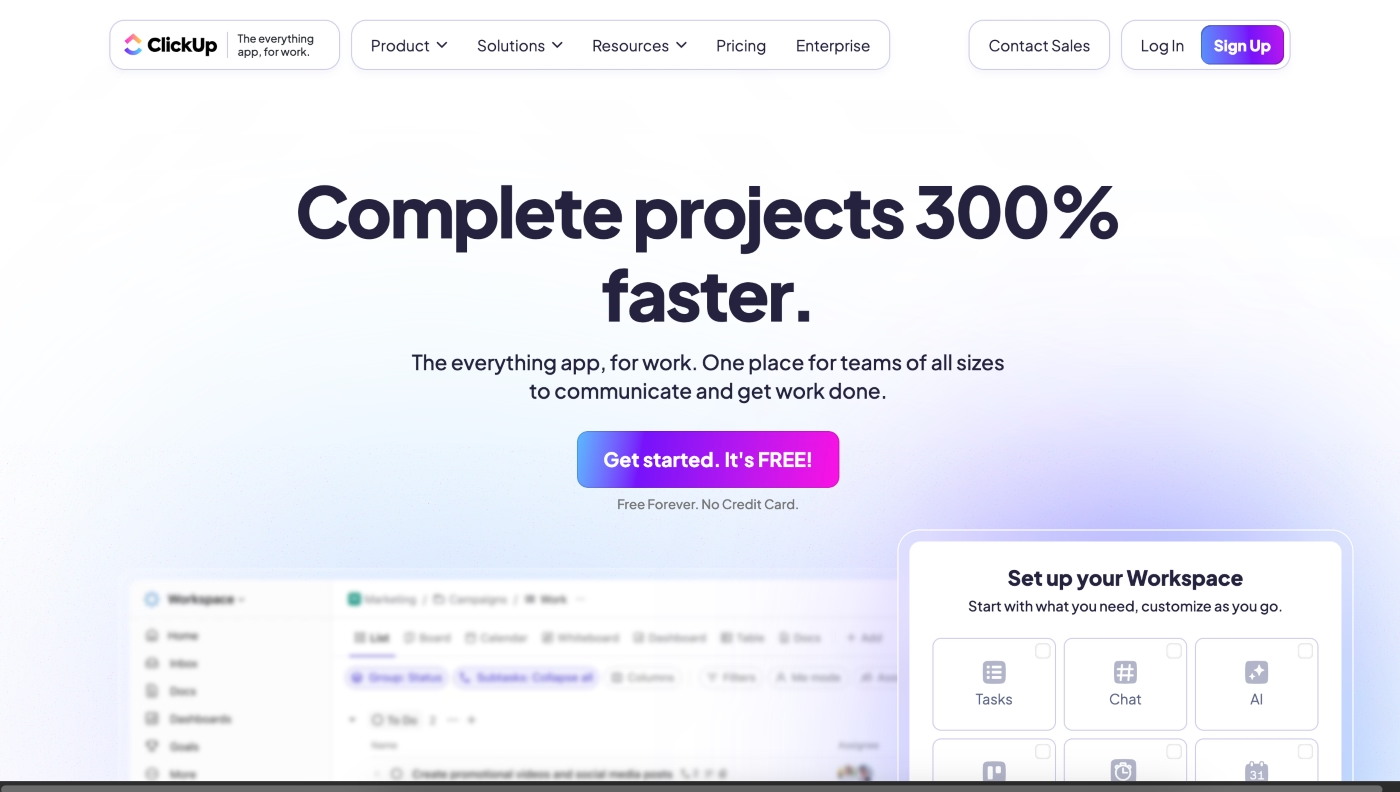
ClickUp is among the most popular project management platforms, and for a good reason. It’s very adaptable, so it can be used in a variety of niches and industries, including marketing agencies and creative teams.
When it comes to workload management, ClickUp is equipped with capacity planning features that allow you to balance the use of your resources. You can make the most of team efforts by aligning them with specific objectives, thanks to its goal-tracking features.
Key Features
- Effort level tracking
- Workflow automation for repetitive tasks
- Employee workload templates for assessing true capacity
- Integration with Slack, Trello, and Zoom, as well as over 1,000 other apps and tools
- Highly customizable dashboard and workspaces
Pros: ClickUp is very versatile and flexible, both when it comes to its ability to fit most niches, as well as the size of teams. It works equally well for small creative teams and large enterprises. A huge number of integrations enables you to dial in just the right workflow for your organization.
Cons: Due to its complexity, ClickUp’s UI may overwhelm new users. Also, if you are looking to reap all the benefits of customization, you will have to set aside a significant chunk of time to get everything adjusted to your needs.
Pricing
ClickUp is free for personal use. Unlimited plan is priced at $7/month per user, whereas its Business plan costs $12/month per user. You will need to contact their team about the price of their Enterprise plan.
8. Bonsai
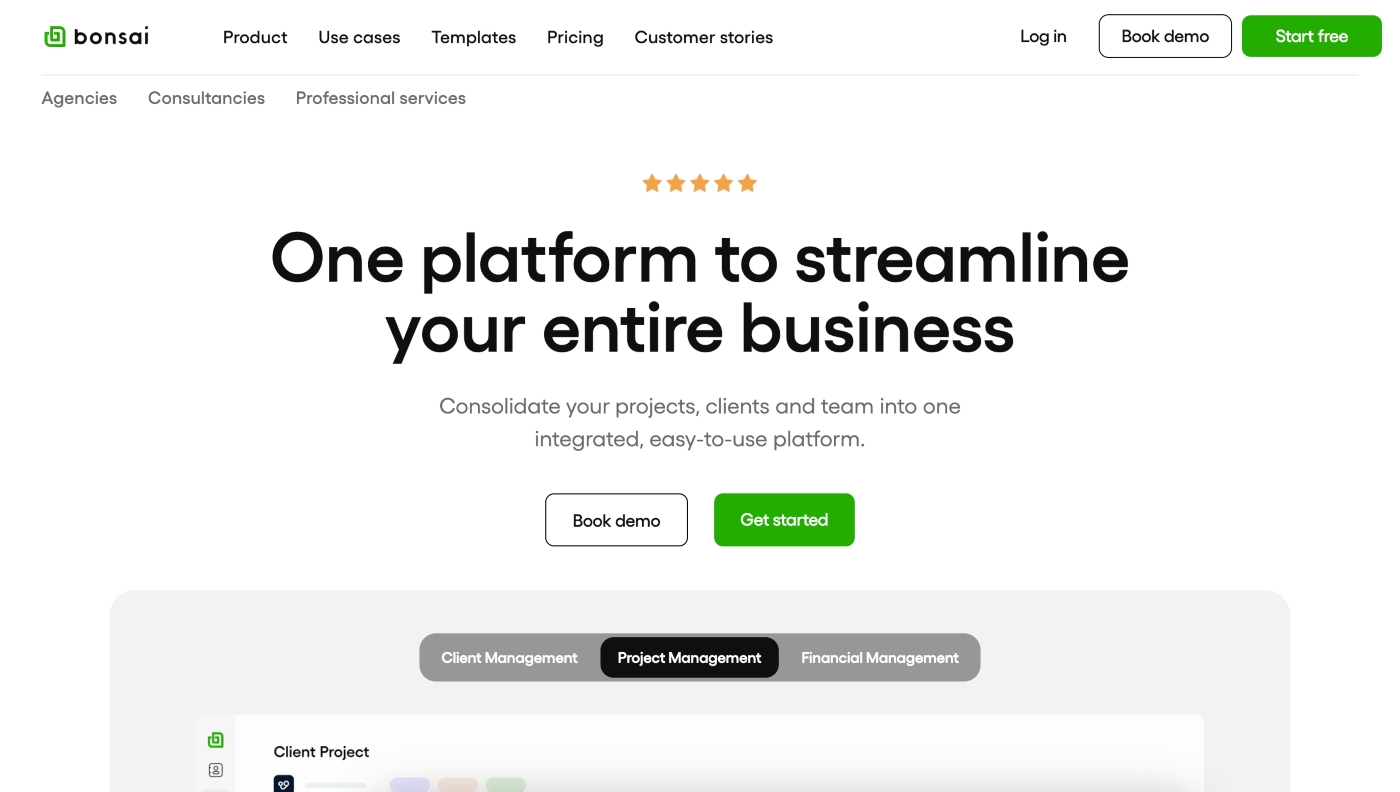
Although Bonsai is business management software that enables you to handle various aspects of your business, including project management and invoicing, it comes with functionalities that make it suitable for workload management.
More specifically, Bonsai’s workload view enables you to assign and manage team tasks, as well as to monitor the capacity of your team members. With those insights, you can get all the insights you need to create an optimal and fair workload distribution.
Key Features
- Capacity management and task estimates
- Time tracking with detailed records
- Team utilization and employee profitability reports
- Task templates
- Customizable statuses and fields
Pros: Bonsai’s reports allow you to gain an insight into the true capacity of your team and its members, but also how that translates into profit for your organization. This is further supported by automated invoices and customizable contracts.
Plenty of integration options, such as Gmail, Zapier, Slack, Trello, Google Drive, and ClickUp, among others.
Cons: If you are looking to scale your efforts or operation, Bonsai may not be the best option there. Additionally, it might lack some of the advanced features since it's not built solely for workload management.
Pricing
Prices start at $9/month per user for the Basic plan, all the way to $49/month per user for the Elite plan.
9. Smartsheet
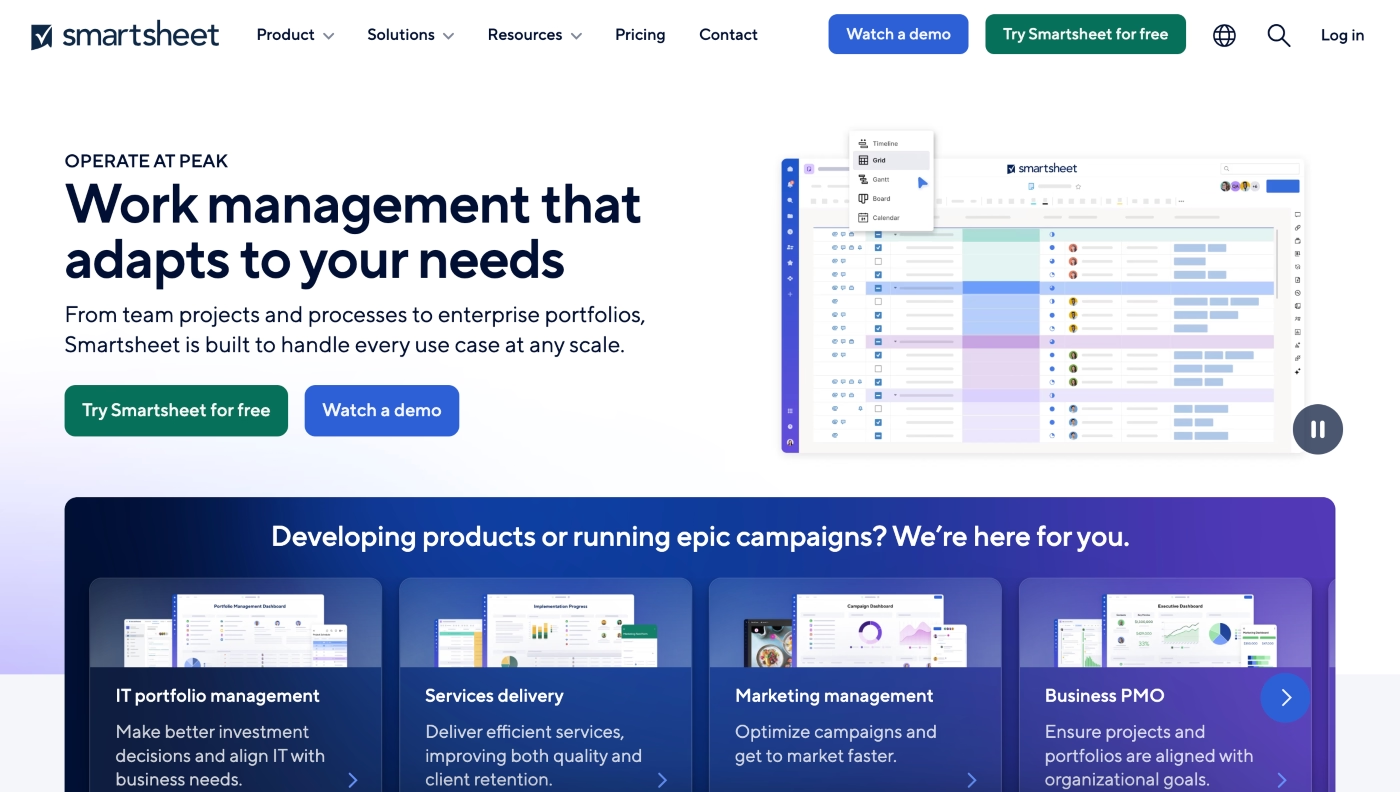
If you are used to using spreadsheets to manage the workload for your team or organization, then Smartsheet will be right up your alley. It combines the ease of use and familiarity of an Excel spreadsheet, but without the complicated calculations.
Instead, Smartsheet is equipped with features for automation, workflow optimization, and workload management. For instance, it has a designated workload view that enables you to see in detail how your workload is distributed, and how you can optimize it.
Key Features
- Workload and resource availability tracking
- Workload heat mapping for over-allocation and understaffing detection
- Insights into which projects are causing over-allocation and understaffing
- Sheet-to-sheet linking
- Android and iOS apps available
Pros: Customizing dashboards in Smartsheets is really simple and straightforward, and you can link different projects with sheet-to-sheet functionality. Workload-specific features such as workload tracking and workload heat mapping provide excellent insights into your team’s capacity.
Obviously, those familiar with Excel and Google Sheets will love this approach to workload management.
Cons: In order to be able to fully use all the advanced features, be prepared to spend some time figuring them out. Also, there are too few template options available.
Pricing
$9/month per user for the Pro plan, $19/month per user for Business. Enterprise and Advanced Work Management pricing is available upon request.
10. Basecamp
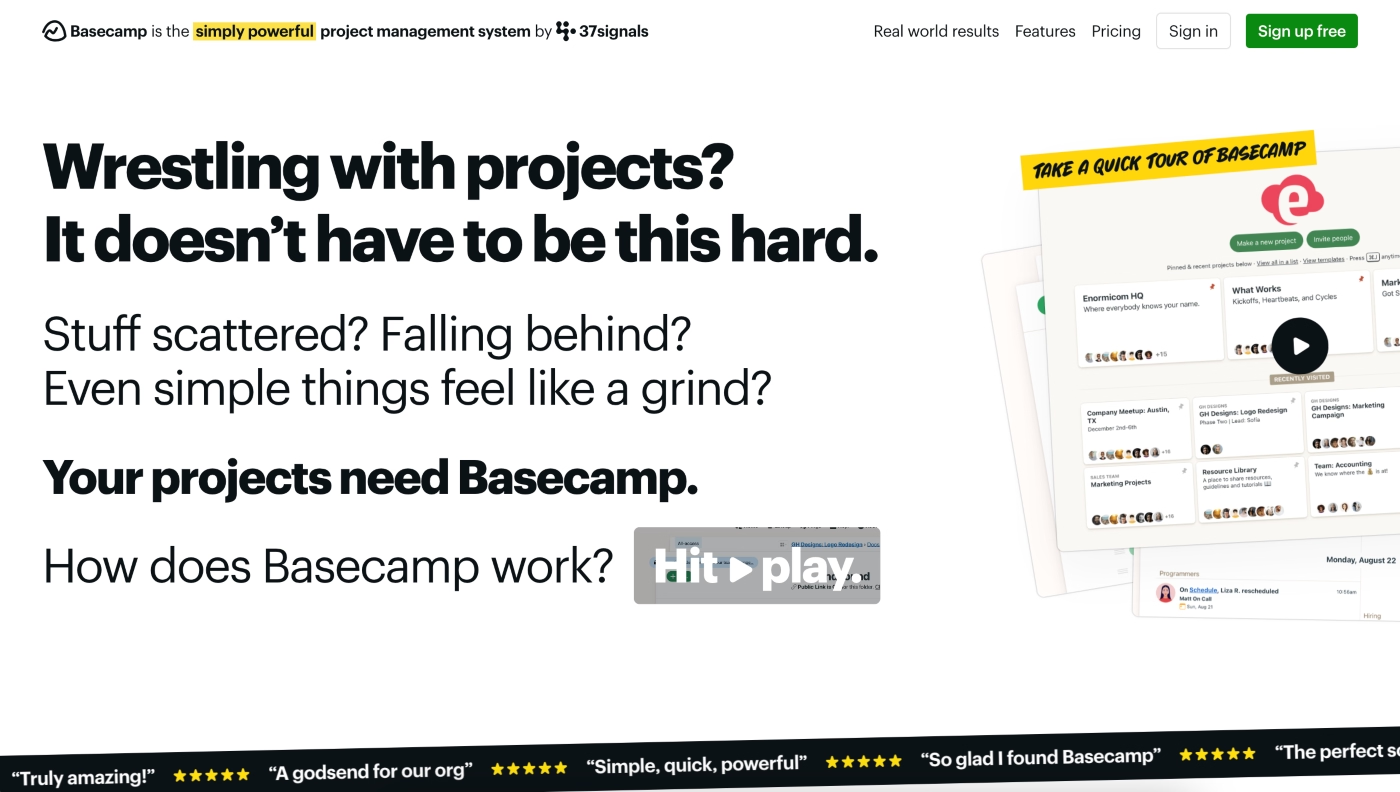
Basecamp is a project and workload management solution that is among the most popular ones on the market. The main reason why Basecamp stands out is its simplicity and streamlined interface.
You can easily distribute the work among your team members by using basic features such as to-do lists, file storage, and message boards, as well as Hill charts to track the progress of your projects. Basecamp is a good option for personal projects and small teams.
Key Features
- Hill charts for monitoring task progress
- Client access feature
- Integration with apps like Time Doctor, Hubstaff, Timesheet, Clockify, TestLldge, Toggl, and so on
- Task allocation and capacity planning
- Deadlines and events combined into a single calendar view
Pros: Basecamp is really easy to use, there is literally no learning curve to it. If your team is working on small and straightforward projects that don’t involve several phases or dozens of people, it’s an option worth considering.
Cons: Basecamp is simple, but it’s also lacking some of the tools and features that its competitors have. If your agency team is growing or is on the larger side, you might need a more powerful solution.
Pricing
Basecamp has a free plan, as well as the Plus plan, which costs $15/month per user. You can also pay a fixed price of $299 per year for your entire organization, regardless of the number of users.
11. Productive
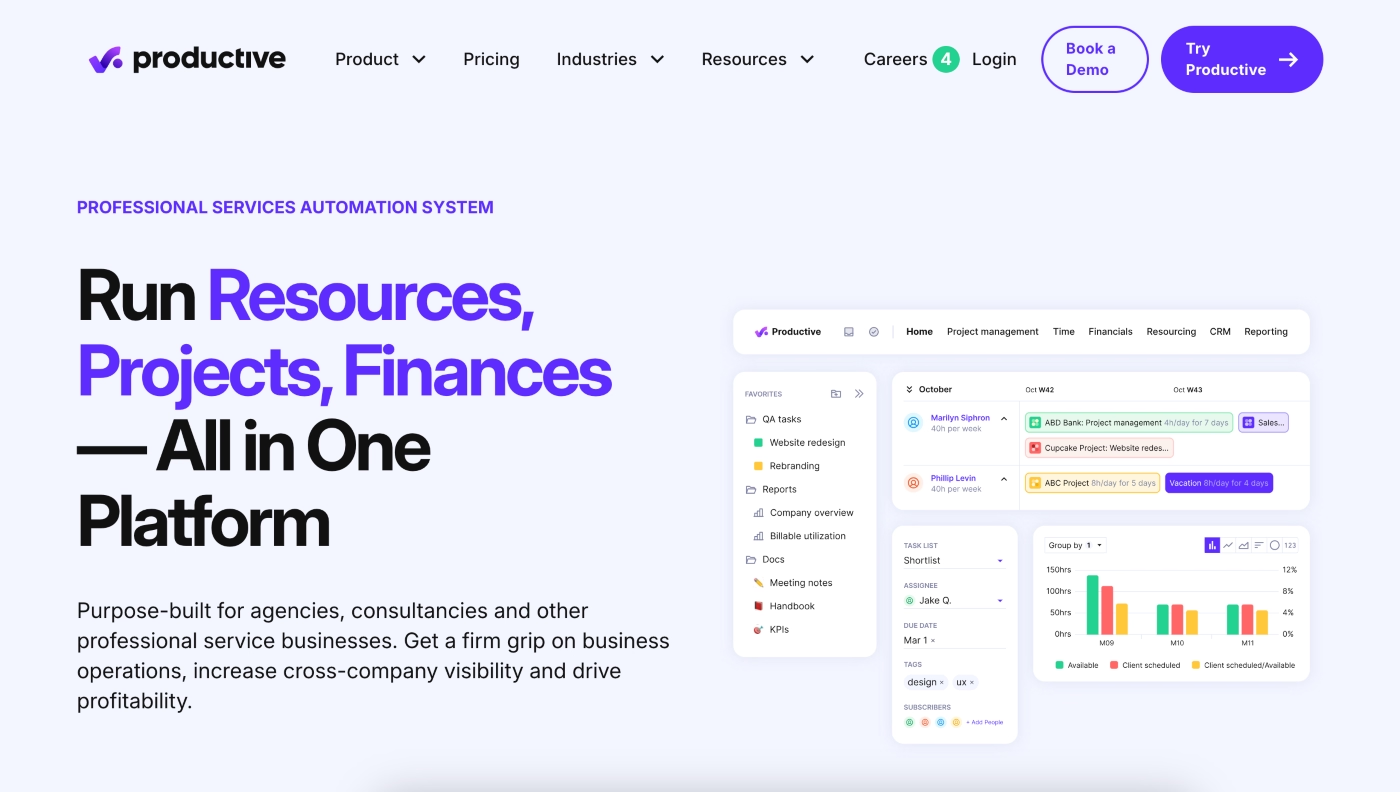
Productive is an all-in-one tool that enables agency teams to handle resource planning, manage their workload, as well as plan their finances. It also comes with AI and automation features that save time, such as AI-generated documentation.
Also, you can manage your team’s time off, while the platform automatically adjusts the workload, which means you won’t have to invest in a separate HR tool. It also comes with revenue prediction features.
Key Features
- Time estimates for team members
- Forecasting capacity changes to plan potential hires
- Time off management
- Real-time workload overview
- Integration with Slack, Jira, QuickBooks, Sage, BambooHR, Zapier, and Google Calendar, among others
Pros: Productive has very robust resource planning and time-tracking functionalities, as well as features for financial management, which come in handy if you are also doing your team’s finances.
Cons: Cheaper plans offer somewhat limited functionality, especially when it comes to task workflows. Because Productive comes with so many different features, it does have a bit of a learning curve.
Pricing
$9/month for the Essential plan, $24/month for Professional, and $32/month for the Ultimate plan.
Conclusion – Let ActiveCollab Carry the Workload for You
Choosing the right workload management software can turn into a project of its own, simply because there are so many different tools available out there. However, you can make the process much faster and easier if you narrow down your choice right from the get-go.
Consider the size of your agency, your industry, as well as the need for specific features that a potential workload management platform needs to have. If you are running a small agency team, and especially if you’re marketing, design, or content and SEO, ActiveCollab is the obvious choice.
Are you looking for a powerful, yet easy-to-use and affordable work management platform for your agency team? Look no further than ActiveCollab!
Sign up for our 14-day free trial, or book a demo, and let us show you why ActiveCollab is the best workload management platform for your agency team!

